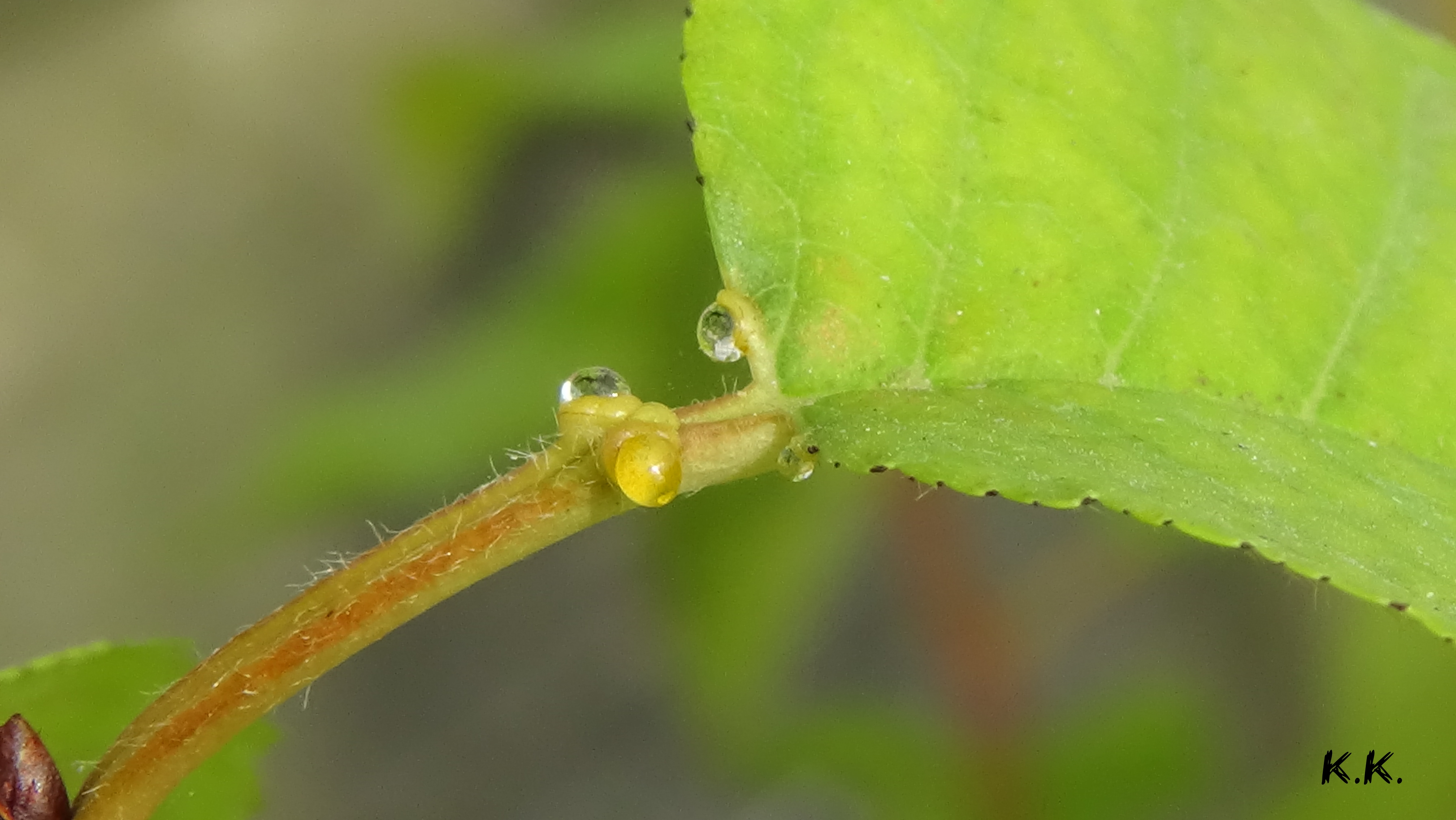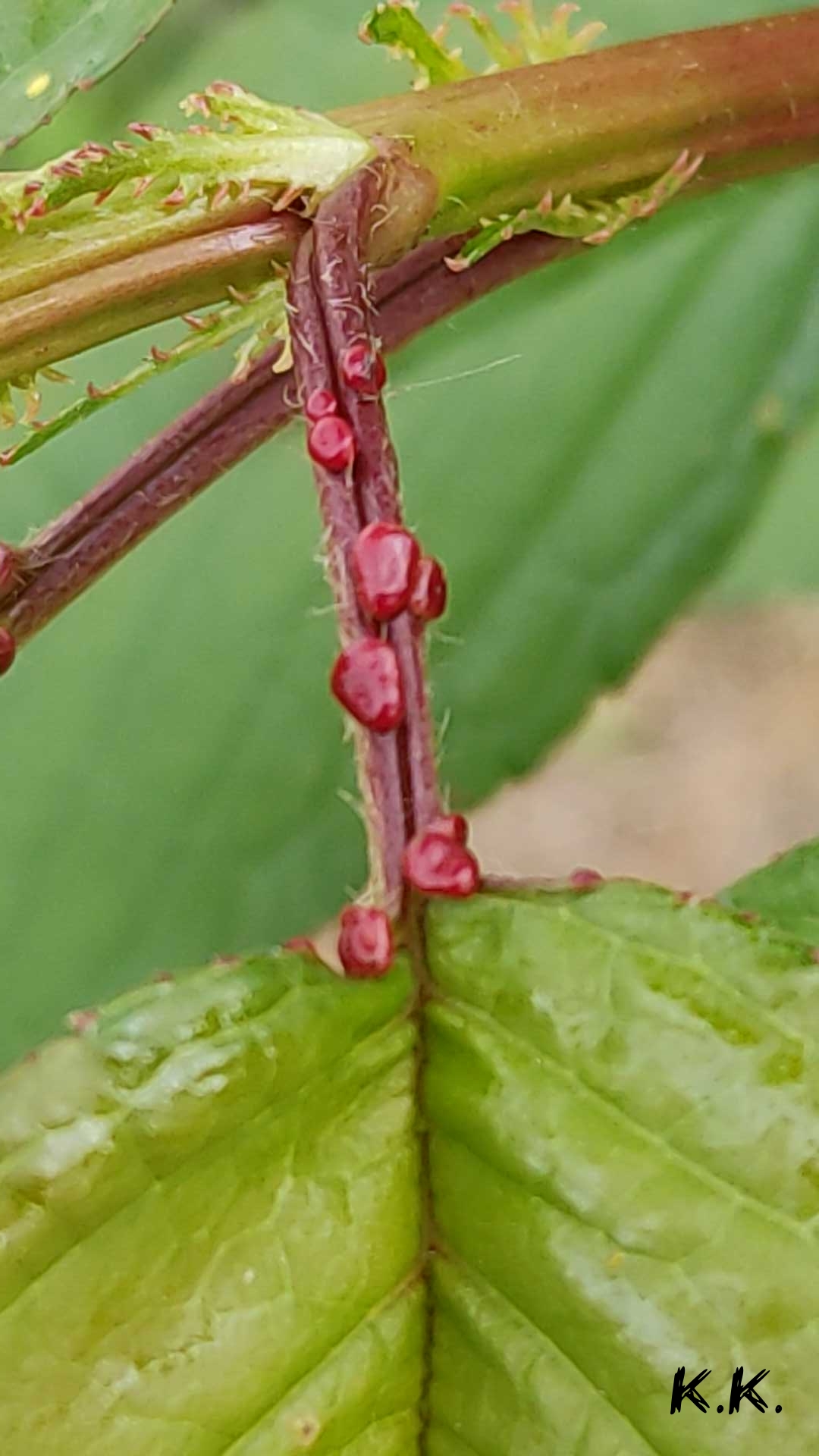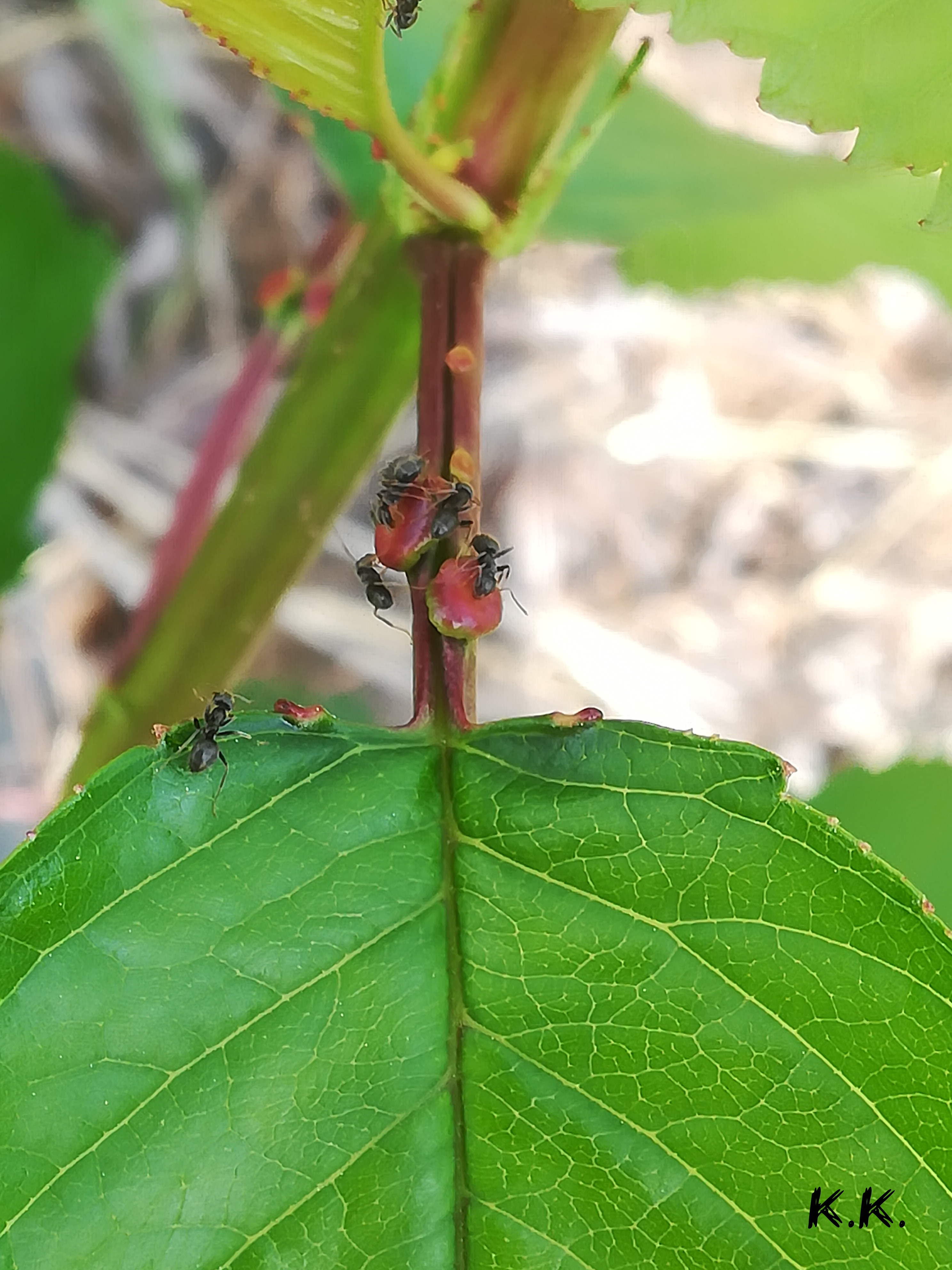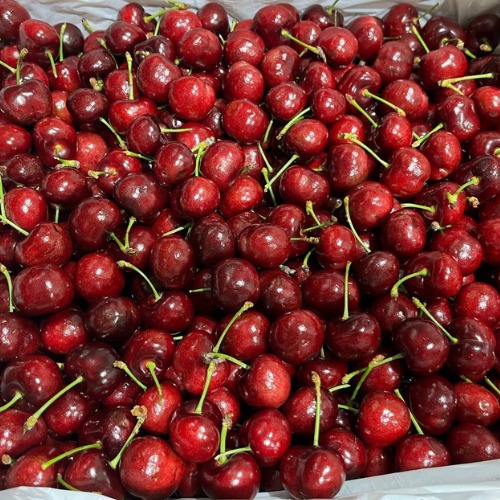Nectary glands (extrafloral nectaries) are glandular epidermal cellular formations of plants, which function as secretory tissues from where the nectar is secreted. The glands first served only as a taxonomic feature–before research revealed their ecological function. Extrafloral nectaries–nectar–producing glands physically apart from the flower–have been identified in at least 2000 plant species in more than 64 families.
Nectaries are secretory structures that produce nectar, a carbohydrate-rich solution comprising mainly sugars that connects the plants with their pollinators and defenders. Specifically, floral nectar is produced to attract pollinators, whereas extrafloral nectar acts to defend plants indirectly.
Nectary glands are found in plants usually in the area of the flower, in the base of the corolla or at the base of the septum between the carpels or between the stamens or in the depth of the cavities of the petals or as an extension of the calyx, depending on the plant species. Nectary glands are also formed in other plant organs, such as bracts, and leaves as occurs in the deciduous fruit trees of the genus Prunus and of course in the sweet cherry (Image 1).
 Image 1: Nectar secretion in cherry leaf nectar glands.The characteristics and number of occurrence of leaf nectar glands differ between cherry cultivars. Thus, they may appear on the stem or the edge of the blade or both, may be spherical, kidney-shaped or elongated, may be colored green, red or various shades of brown etc. (Image 2).
Image 1: Nectar secretion in cherry leaf nectar glands.The characteristics and number of occurrence of leaf nectar glands differ between cherry cultivars. Thus, they may appear on the stem or the edge of the blade or both, may be spherical, kidney-shaped or elongated, may be colored green, red or various shades of brown etc. (Image 2).
 Image 2: Nectary glands on cherry leaves (unusual case of a large number).
Image 2: Nectary glands on cherry leaves (unusual case of a large number).
As mentioned above, the nectar glands of the leaves also perform the function of nectar secretion. Furthermore, the nectar glands of the leaves may carry out the process of excreting nectar from the plants, as an overproduction material, on days with intense sunshine and intense photosynthetic activity.
Whatever happens from the above, is the reason why we observe bees or ants or other insects sucking nectar from the nectar glands of cherry leaves, in times of absence of flowers, e.g. summer (Photo 3). The plants secrete nectar to attract predatory insects (such as ants or wasps) which will not only drink the nectar but will eat plant-eating insects as well.
 Image 3: Ants sucking nectar from cherry leaf nectar glands, in early summer.
Image 3: Ants sucking nectar from cherry leaf nectar glands, in early summer.
In conclusion the nectary glands observed in the leaves of cultivated deciduous fruit trees is a plant organ with a specialized function, which contributes in its own way to the vital survival processes of the trees.
Source: Hellenic Agricultural Organization DIMITRA (ELGO-DIMITRA), Institute of Plant Breeding and Genetic Resources, Department of Deciduous Fruit Trees, Naoussa, Greece
Images: Hellenic Agricultural Organization DIMITRA (ELGO-DIMITRA), Institute of Plant Breeding and Genetic Resources, Department of Deciduous Fruit Trees, Naoussa, Greece
Konstantinos Kazantzis and Thomas Sotiropoulos
Cherry Times - All rights reserved















